- Home
- Best Pet for Me
- Amphibians as Pets
Amphibians as Pets: A Unique and Low-Maintenance Way to Bring the Outdoors into Your Home
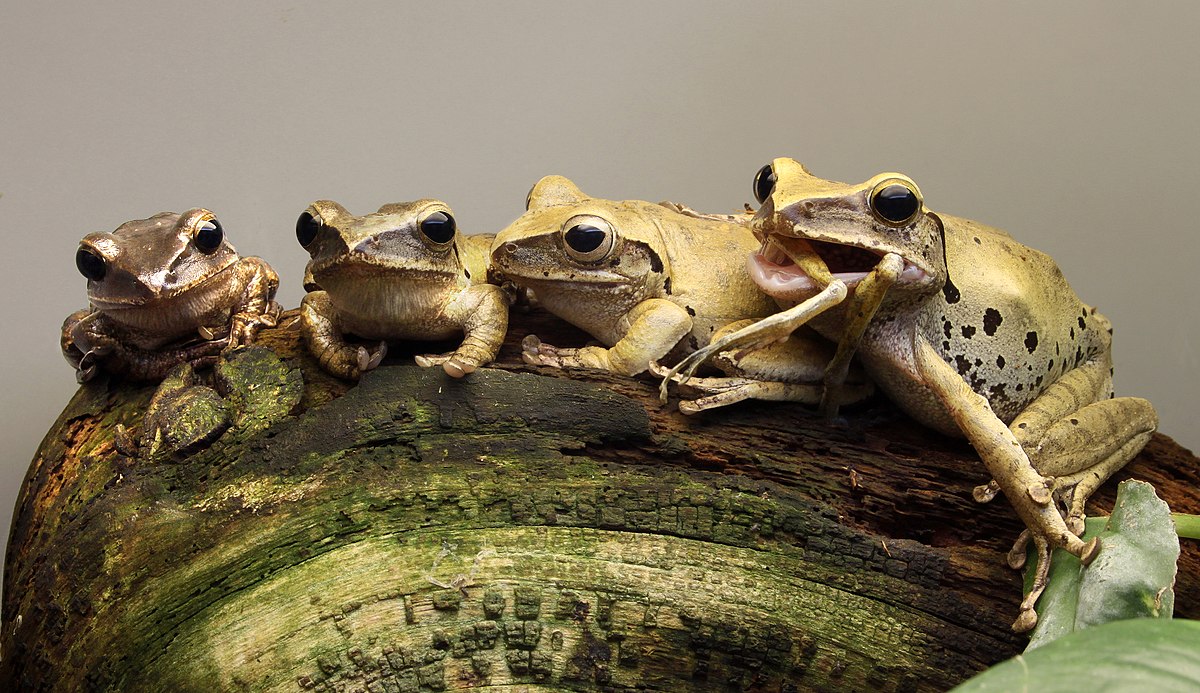 https://commons.wikimedia.org/wiki/File:Polypedates_leucomystax_weissbart_ruderfrosch.jpg
https://commons.wikimedia.org/wiki/File:Polypedates_leucomystax_weissbart_ruderfrosch.jpgHave you ever thought of amphibians as pets?Amphibians can bring a bit of the outdoors into your home. Amphibian pet owners like to watch their animals eat and do other activities that you don’t get to see often. People don’t tend to be allergic to amphibians and they don’t smell.
They need heat, light a water source, daily feeding, and periodic tank cleaning. It is often recommended that you put vitamin dust on the food for amphibians, similar to what is commonly done for food for reptiles. Each species of amphibian has different needs. If they are from the tropics, they require a lot of heat and humidity, if they are from colder climates, they need their habitat to be less warm.
Their habitats should mimic what they are used to in the environment, so find out where your pet amphibian make it home in the wild. They should have plants, mosses, rocks, dirt, and water to go into.
Find out what the temperature and humidity is like in the natural environment of the amphibian you adopt and recreate that in their cage. Most amphibians like it hot and humid.
They should have UV lights that are similar to what they are used to - 12 hours day and 12 hours night is a good baseline. Don’t forget to heat their water source and make sure that it is clean and filtered with no pathogens growing in it.
They tend to eat insects, crickets, worms, and roaches. Sometimes you can find pellets for them in the pet store. Small and active ones would need to eat once a day, larger and less active ones might need to eat just once a week.
Their live food should be dusted with vitamins and should be purchased for them. Insects caught in the wild for food might have insecticides in them.
 https://commons.wikimedia.org/wiki/File:Fire_salamander_(Salamandra_Salamandra).jpg
https://commons.wikimedia.org/wiki/File:Fire_salamander_(Salamandra_Salamandra).jpgMake sure you have a vet that can work with your amphibian if there are any problems. Your pet might have medical issues because of improper heat, difficulty with expelling eggs, and infections. If you handle them, wash your hands before and after. They will absorb anything on your hands through their skin, so you don’t want to subject them to toxins from your hands. Wash your hands afterward because they often have bacteria on them.
Some amphibians can share a habitat with others of their same species, other types of amphibians, or other animals. You would need to be sure that all animals in a habitat can cohabitate safely and provide ample room for them all. The bottom of the habitat should have sand, rocks, dirt, or whatever is appropriate for the particular species.
Here is some information about common amphibian pets. The different types of amphibians have different temperature and humidity needs, so you would have to research the needs of your pet.
African Dwarf Frogs: Social, Low-Maintenance Pets that Thrive in Groups and Underwater Environments
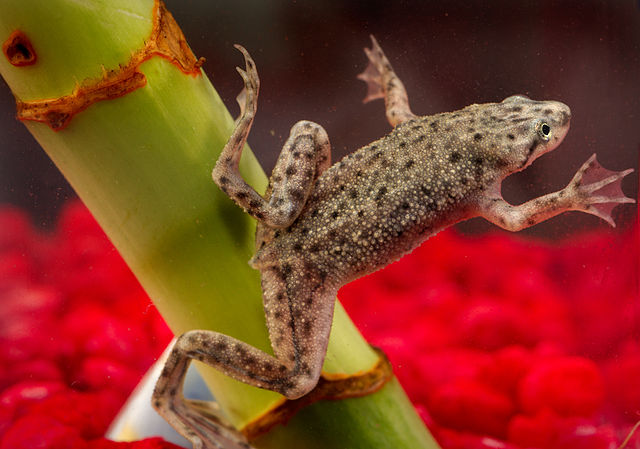 James Gathany, Public domain, via Wikimedia Commons
James Gathany, Public domain, via Wikimedia CommonsAfrican Dwarf Frogs live most of their life underwater and are from Nigeria, Cameroon and the Congo. They really need to be kept with other African Dwarf Frogs and their space requirements are twice as much for two as for one. Better yet, keep three frogs together.
Have at least a 10 or 20 gallon tank for your frogs. It is also possible to keep these frogs and fish together. The tank should be a shallow one so they can come up for air frequently.
These amphibians as pets usually live for about 5 years. They grow to about 3 inches, with the females being bigger than the males. Their feet are webbed and they have eyes on the side of their head. They naturally eat brine shrimp, worms, and plants.
Brazilian Milk Frogs: Long-Lived, Tree-Dwelling Pets That Thrive on Live Prey
 https://commons.wikimedia.org/wiki/File:Amazon_milk_frog_(24068153565).jpg
https://commons.wikimedia.org/wiki/File:Amazon_milk_frog_(24068153565).jpgThese large Brazilian frogs like to live in trees and will grow to be up to 4 inches long.
They will live 15 years or more and eat insects, spiders, worms and other live prey. This makes them extremely fascinating for the amphibian pet owner to watch! You can have fun designing and making the perfect habitat for your Brazilian Milk Frog.
American Green Tree Frog: Small, Lively, and Fond of Crickets and Worms
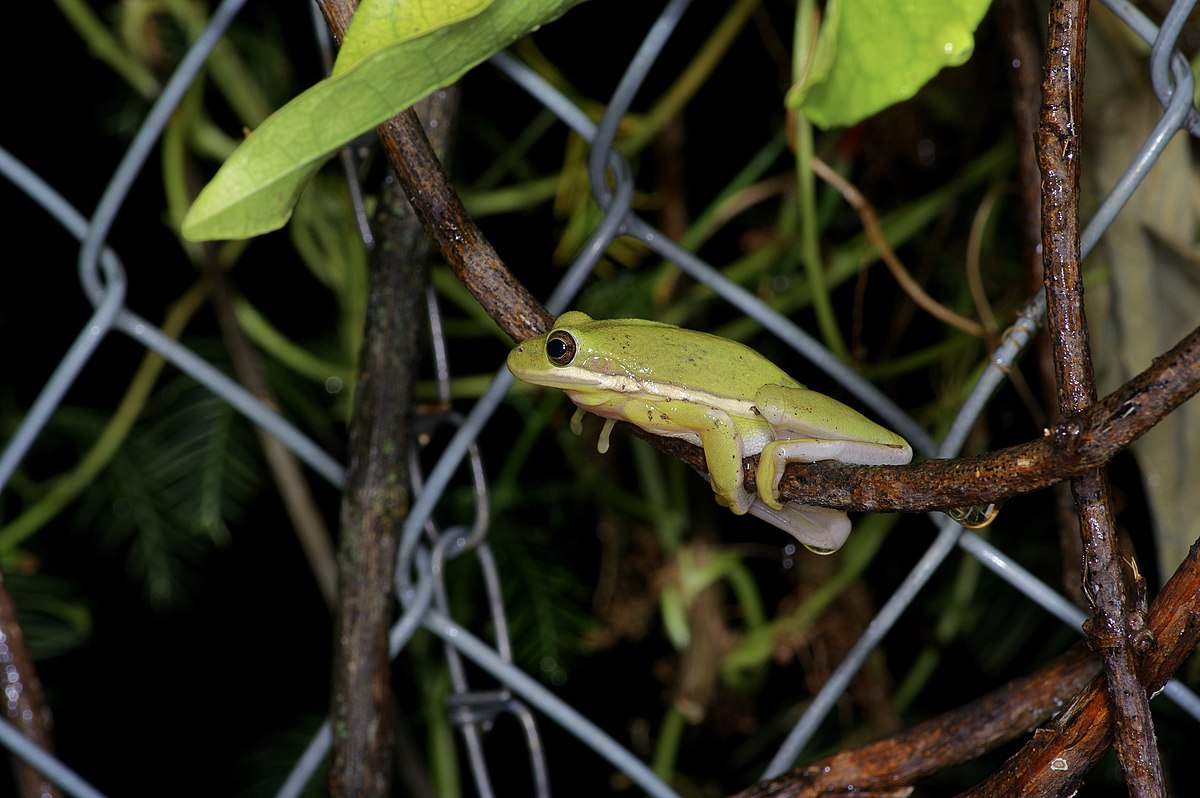 https://commons.wikimedia.org/wiki/File:Hyla_cinerea_158997427.jpg
https://commons.wikimedia.org/wiki/File:Hyla_cinerea_158997427.jpgThey are naturally found in the southeastern and middle U.S. They are brightly green or yellow-colored with large toes. They will grow up to 2.5 inches and like to eat crickets and worms.
Be aware that it is illegal in many states to capture wildlife and keep them as pets. It is also illegal to release unwanted amphibians as pets into the wild. If you have a chance to rescue a frog from someone who is about to relsease it, please keep the animal as your pet. But don't ever release it yourself and don't try to capture one from the wild.
Argentine Horned Frogs: Grassland Dwellers that Thrive in Humid Environments and Feast on Locusts and Small Mice
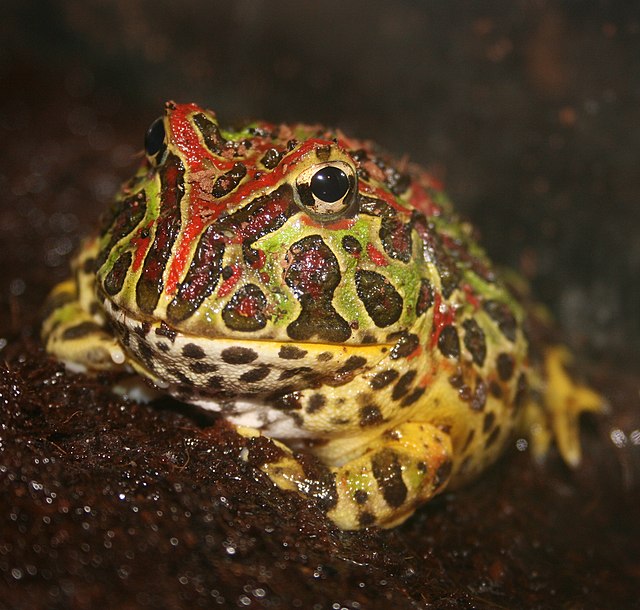 https://commons.wikimedia.org/wiki/File:Mr_Wiggles_7-20-07_(870844637).jpg
https://commons.wikimedia.org/wiki/File:Mr_Wiggles_7-20-07_(870844637).jpgNaturally living in the grasslands of Argentina, Brazil, and Uruguay, these animals need high humidity in their cage, but not necessarily a pond.
The females can grow to be 7 inches and the males are smaller.
They will eat locusts and even small mice. They should be kept alone in a cage. These amphibians as pets will actually eat anything that is smaller than themselves, so if a smaller frog is kept in a cage with a bigger one, the smaller one will become a snack.
Argentine Horned Frogs can live up to 10 years, but 6-7 years is considered a good lifespan for them.
Axolotls: Unique Underwater Salamanders with Remarkable Regeneration Abilities and a Critical Conservation Status
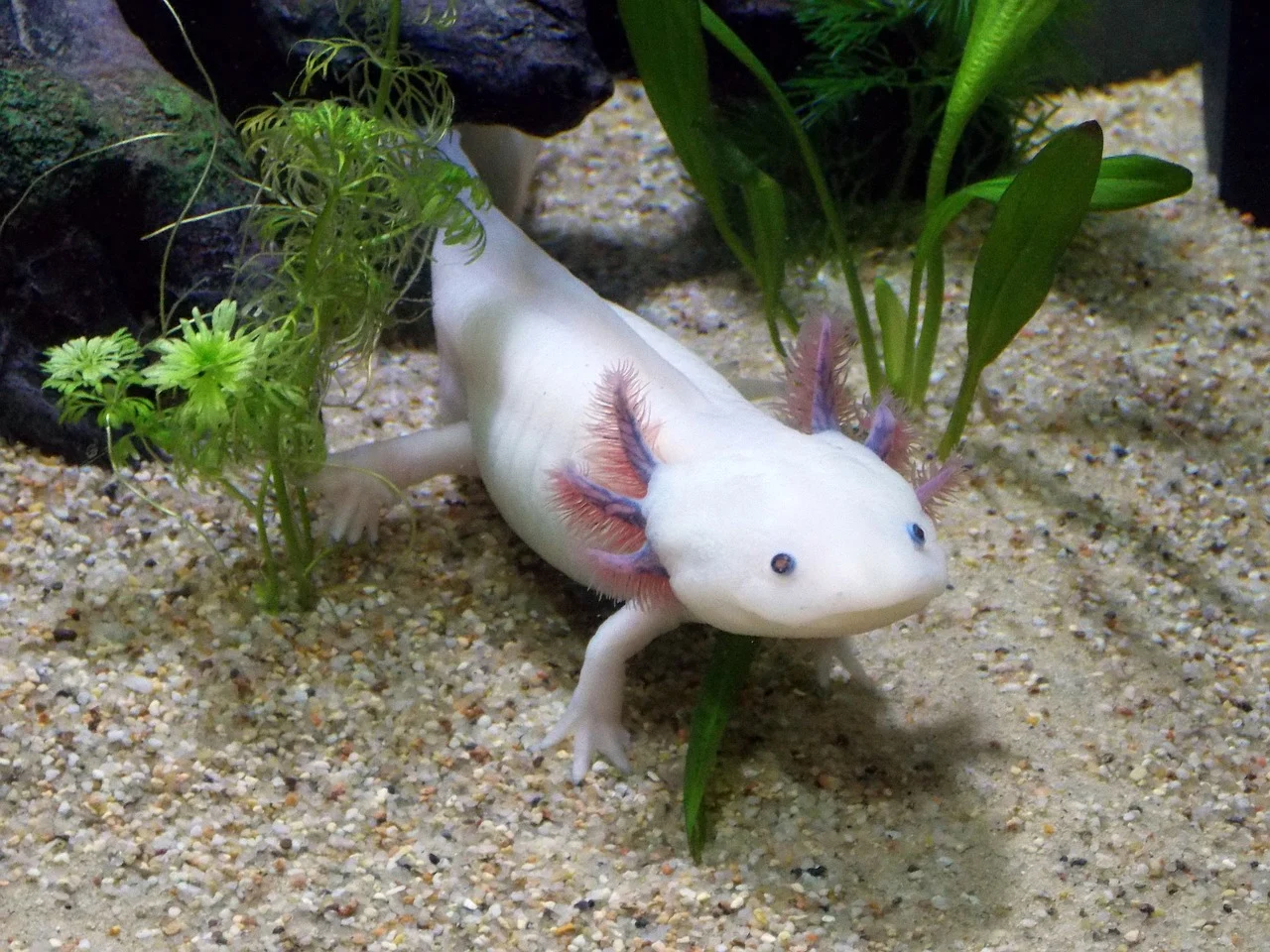 https://commons.wikimedia.org/wiki/File:Axolotl-2193331_1280.webp
https://commons.wikimedia.org/wiki/File:Axolotl-2193331_1280.webpThese unique animals look like fish but are actually salamanders, although they do live entirely underwater. Their natural habitat is lakes around Mexico City.
They are a critically endangered species and conservationists aregoing through great measure to keep them alive.
They grow to around 9 inches and keep their fins as adults.
They eat mullusks, worms, insect, and small fish. They usually live 5 years in the wild, but can live up to 15 years in captivity.
They have the ability to heal their limbs, gills and parts of their eyes and brains if injured.
Budgett’s Frogs: Fierce, Mud-Dwelling Creatures with a Surprising Defense Tactic
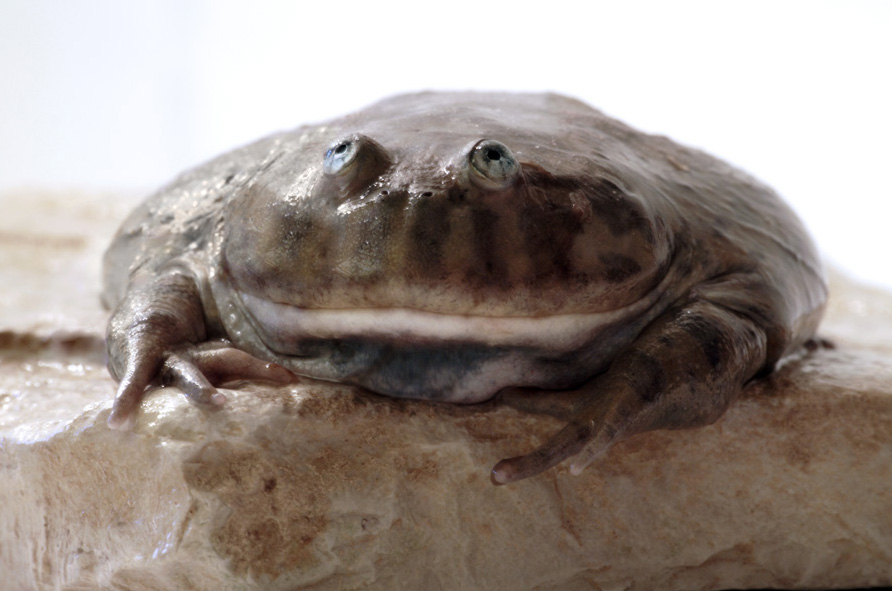 https://commons.wikimedia.org/wiki/File:Froggiej.jpg
https://commons.wikimedia.org/wiki/File:Froggiej.jpgThese aquatic frogs hail from South America.
They can be aggressive. When they are scared, they will stand up on their hind legs, inflate themselves, shriek, and lunge at you.
They like to submerge themselves in mud so that only their nose and eyes stick out.
They will eat other frogs, tadpoles and insects.
They will grow to be about 4-5 inches and live 15-20 years.
Caecilians: Tropical Aquatic Animals That Thrive in Rocky Waters and Feast on Fish and Insects
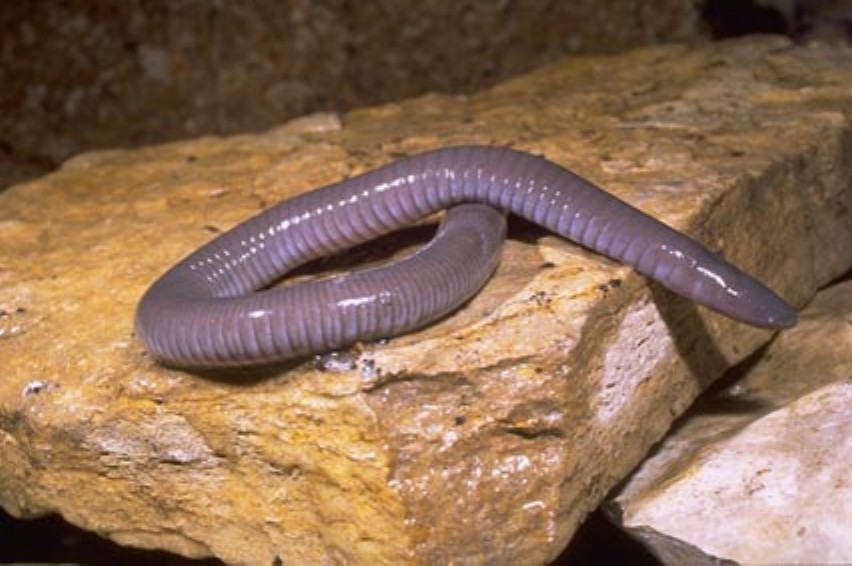 https://commons.wikimedia.org/wiki/File:Dermophis_mexicanus.jpg
https://commons.wikimedia.org/wiki/File:Dermophis_mexicanus.jpgThese animals look like eels, but they are not related to them.
They will grow to be 20 inches and live for 4-5 years.
They are from Southeast Asia, Africa, South America, and South China. They live in tropical water with a rocky bottom and must return to the surface frequently for air.
These amphibians as pets can live with each other, but may eat any fish that they are kept with. Their food is usually worms, small fish, and insects.
Gray Tree Frog: Can Change Color For Camouflage
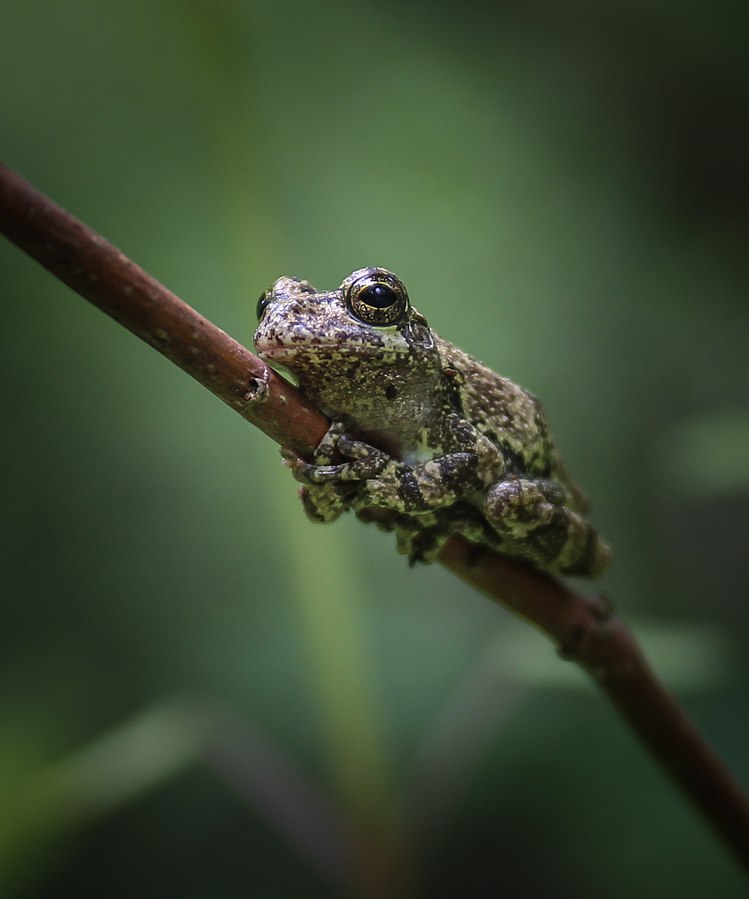 https://commons.wikimedia.org/wiki/File:Gray_Tree_Frog_-_Wildlife_-_minnesota_(34504302610).jpg
https://commons.wikimedia.org/wiki/File:Gray_Tree_Frog_-_Wildlife_-_minnesota_(34504302610).jpgThese frogs are from the U.S. and southeast Canada. They are not related to a similar frog species, Cope's gray treefrog, which is found in more southern areas.
It's natural habitat is in the forrest. The Gray Tree Frog can actually survive in temperatures of −8 °C (18 °F) even if it's body liquids are frozen.But they like to live in a habitat that is 24 C (75 F). They need a moist area.
When they feel threatened, they will change color to ble in with their environment. They grow to be almost 2 inches and live for 5-10 years. They eat insects and even small frogs.
Oriental Fire-Bellied Toad: Brightly Colored Creatures from Korea, China, and Russia with Long Lifespans
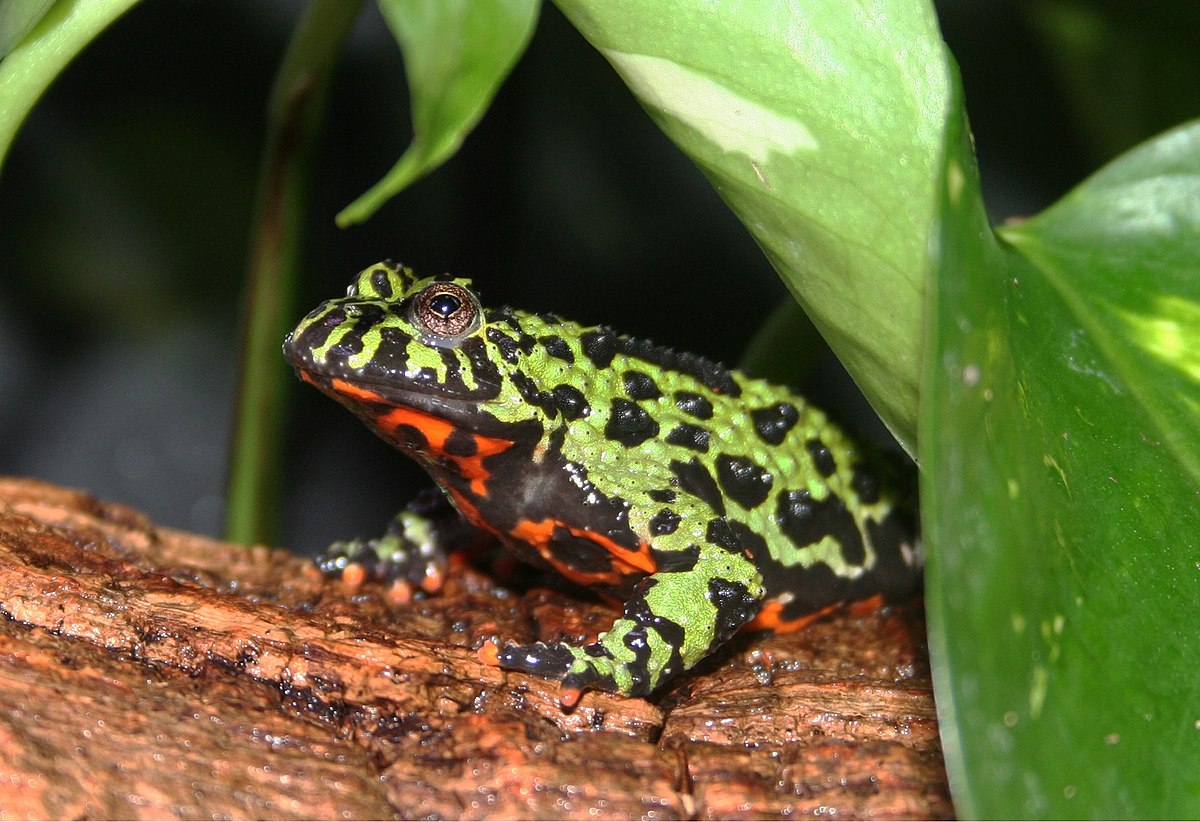 https://commons.wikimedia.org/wiki/File:Oriental_fire-bellied_toad.jpg
https://commons.wikimedia.org/wiki/File:Oriental_fire-bellied_toad.jpgThis is one of the animals that secrete poison from its skin if it is scared. The poison is dangerous if injested. It is best to not handle these amphibians as pets at all. But they are fascinating pets to watch.
They are naturally found in Korea, China, and far-east Russia. They have bright yellow, black, and red coloring.
They grow to be about 2 inches and eat crickets and worms.
They are not great swimmers, so their ponds should be shallow. They do like high humidity, though, so their cages should be muggy. They can live 20 years or more.
They are very socialbe so they should be kept in groups of two or more. They are also active during the day.
Pacman Frogs: Popular Pets From South America That Thrive in Humid Environments and Feast on Insects and Worms
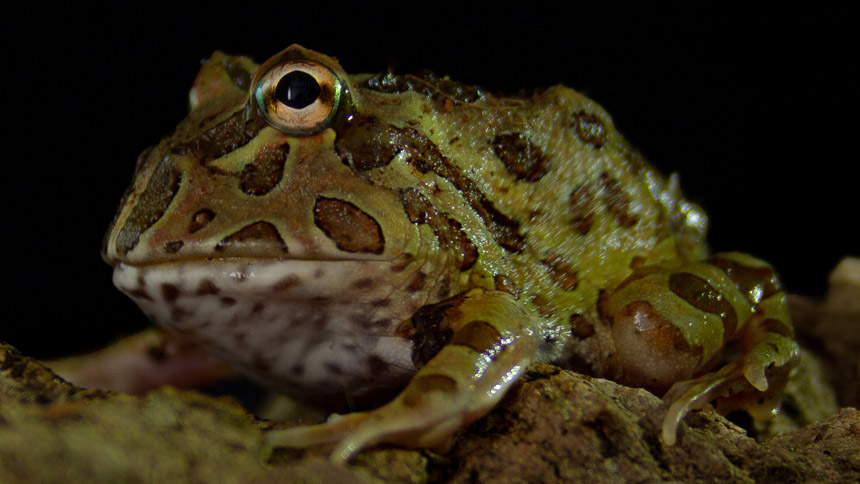 https://commons.wikimedia.org/wiki/File:Pacman_Frog.jpg
https://commons.wikimedia.org/wiki/File:Pacman_Frog.jpgPacman frogs are one of the most popular frogs to have as pets.
They are from South America and mostly live their adult lives on land, but in a humid environment.
They grow to be about 6 inches and live about 6 years.
You can keep these amphibians as pets in a 10 or 20 gallon gallon tank.
They eat insect and worms.
Pixie Frog: Large, Powerful Frogs from Subtropical Grasslands with a Carnivorous Appetite and Long Lifespan
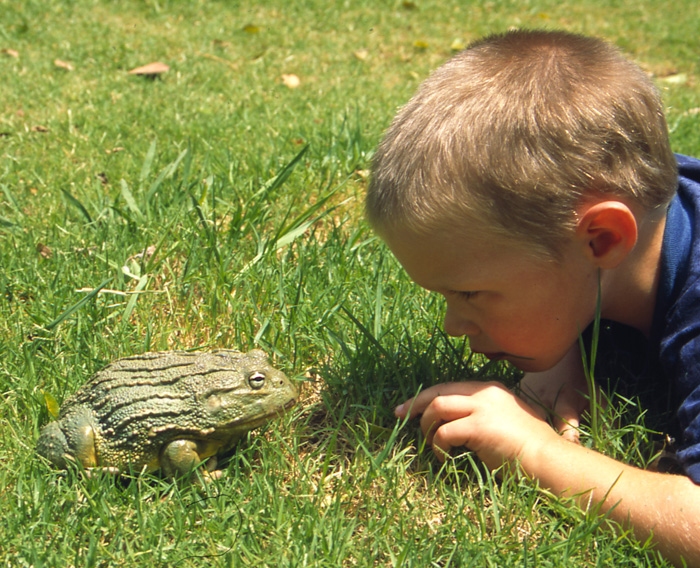 https://commons.wikimedia.org/wiki/File:Pyxicephalus_adspersus01.jpg
https://commons.wikimedia.org/wiki/File:Pyxicephalus_adspersus01.jpgThese large frogs, which come from the subtropical grasslands of Africa, will grow to be 4-10 inches long, with the males actually being bigger than the females.
They are also called African Bullfrogs. They eat insects, fish, mice, lizards, and other small animals.
They might bite if they are not properly socialized or treated poorly. They can live well over 20 years.
Poison Dart Frogs: Colorful South American Amphibians That Thrive in Groups and Live for 10-15 Years
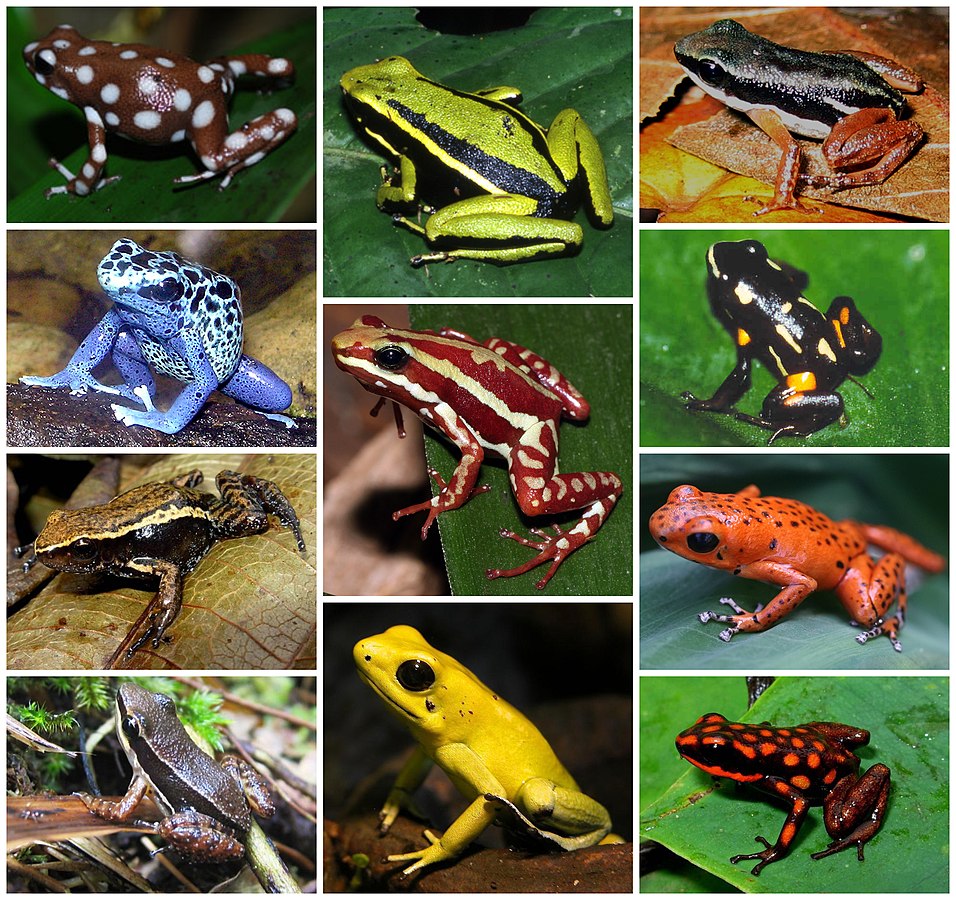 https://commons.wikimedia.org/wiki/File:Dendrobatidae_Diversity.jpg
https://commons.wikimedia.org/wiki/File:Dendrobatidae_Diversity.jpgThese frogs are one of the ones who secrete poison from their skin. They are not dangerous amphibians as pets because they don’t eat the toxic plants they find in the wild to make them poisonous.
They are from the tropical rainforests of South America.
You will want to keep two or three of them together in a 20-30 gallon tank.
Your pets will eat insects, live for 10-15 years, and grow to as much as 2 inches.
Red-Eyed Tree Frog: Small, Brightly Colored, Sticky-Footed Amphibians from Central America's Humid Forests
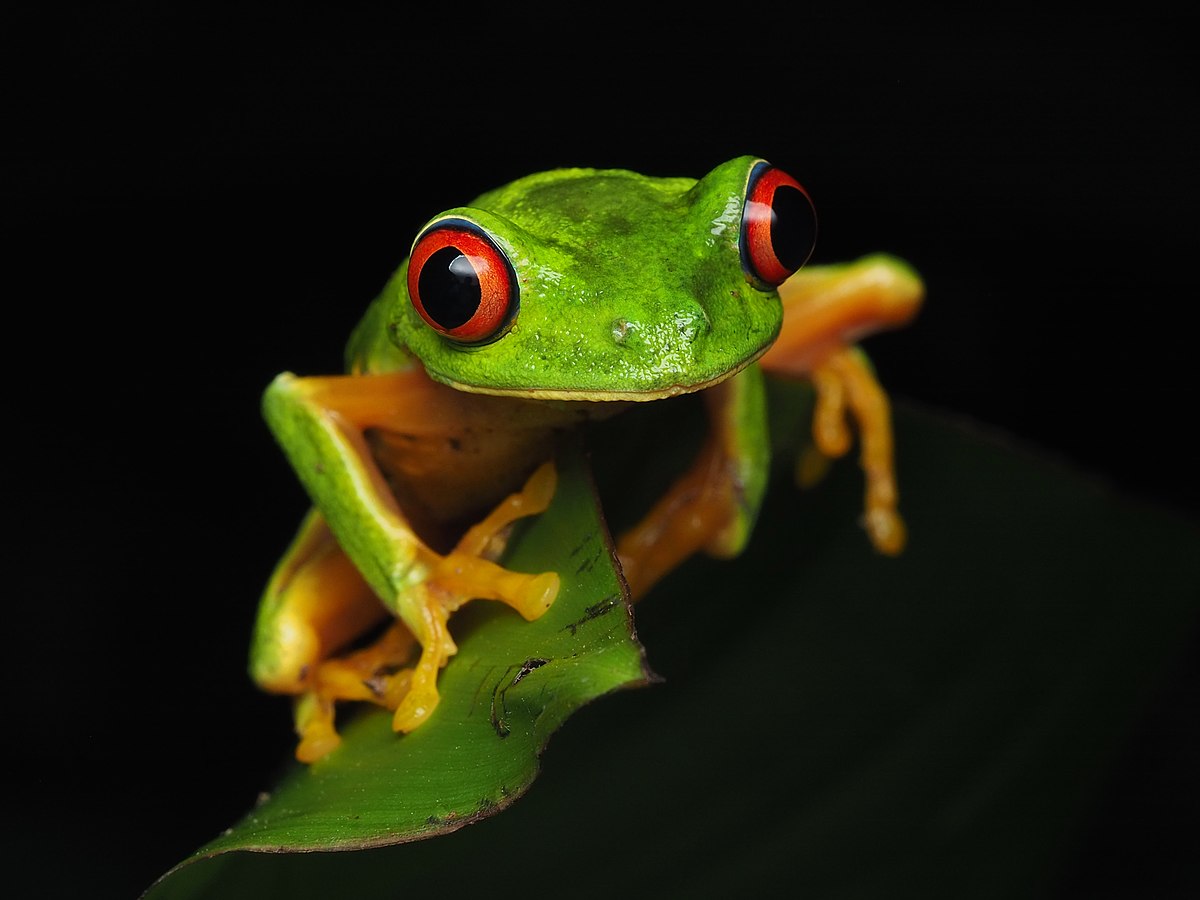 https://commons.wikimedia.org/wiki/File:Red-eyed_tree_frog_Belize_01.jpg
https://commons.wikimedia.org/wiki/File:Red-eyed_tree_frog_Belize_01.jpgThese are small, brightly colored frogs.
They like to live in trees, off the ground and their feet are very sticky. They hail from Central America and like how humid forests and wetlands. You need to keep their natural habitat in mind when planning their enclosure.
They will eat crickets, moths, grasshoppers, flies, mosquitoes, and other insects.
They usually live for about 5 years.
Spotted Salamanders: Boldly Colored, Underground Dwellers from the U.S. and Canada with a Long Lifespan
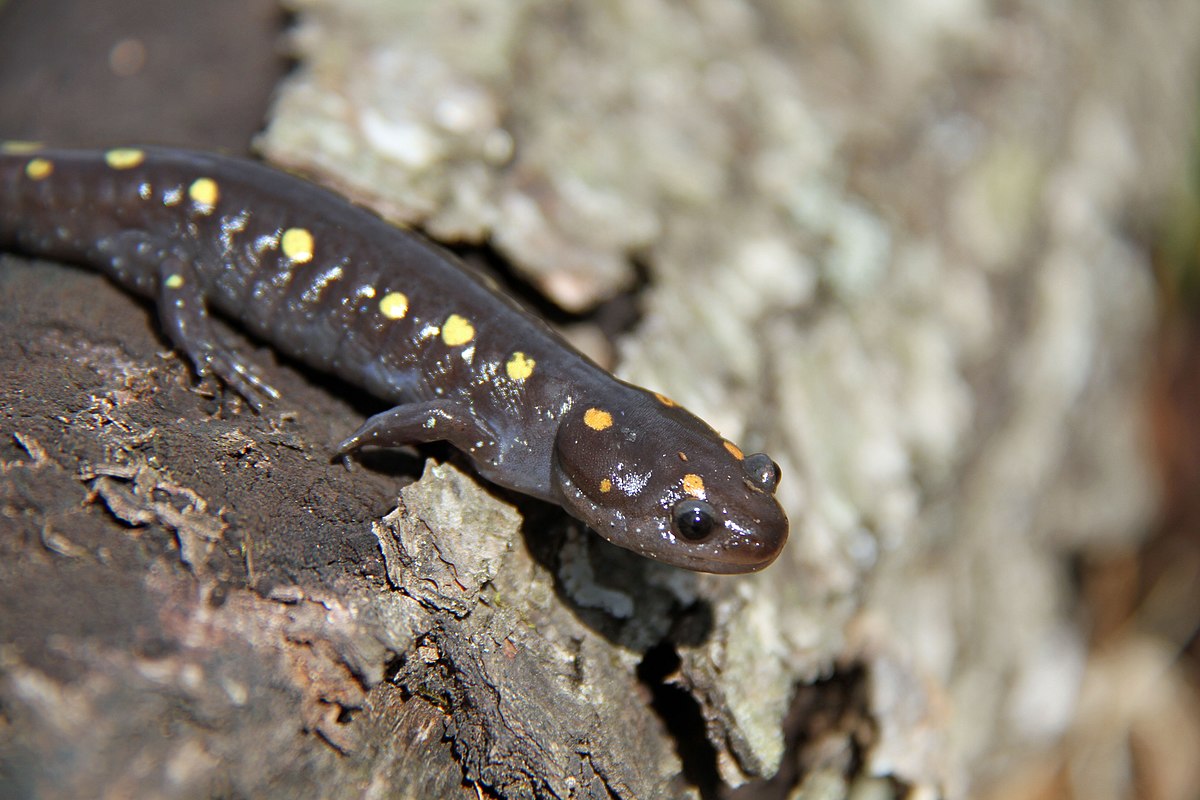 https://commons.wikimedia.org/wiki/File:Spotted_Salamander_(Ambystoma_maculatum)_-_Flickr_-_GregTheBusker_(1).jpg
https://commons.wikimedia.org/wiki/File:Spotted_Salamander_(Ambystoma_maculatum)_-_Flickr_-_GregTheBusker_(1).jpgThey are black or dark grey with yellow spots down their bodies.
They naturally live all over the U.S. and Canada.
Females can grow to be almost 10 inches long, while males are smaller.
They like to live underground.
They will live for 20 years or more if properly cared for.
They eat worms, slugs, snails, spiders, algae, and even other salamanders.
Tiger Salamanders: Striking Green and Black Creatures from the U.S. East Coast with a Long Lifespan and Easy Tamability
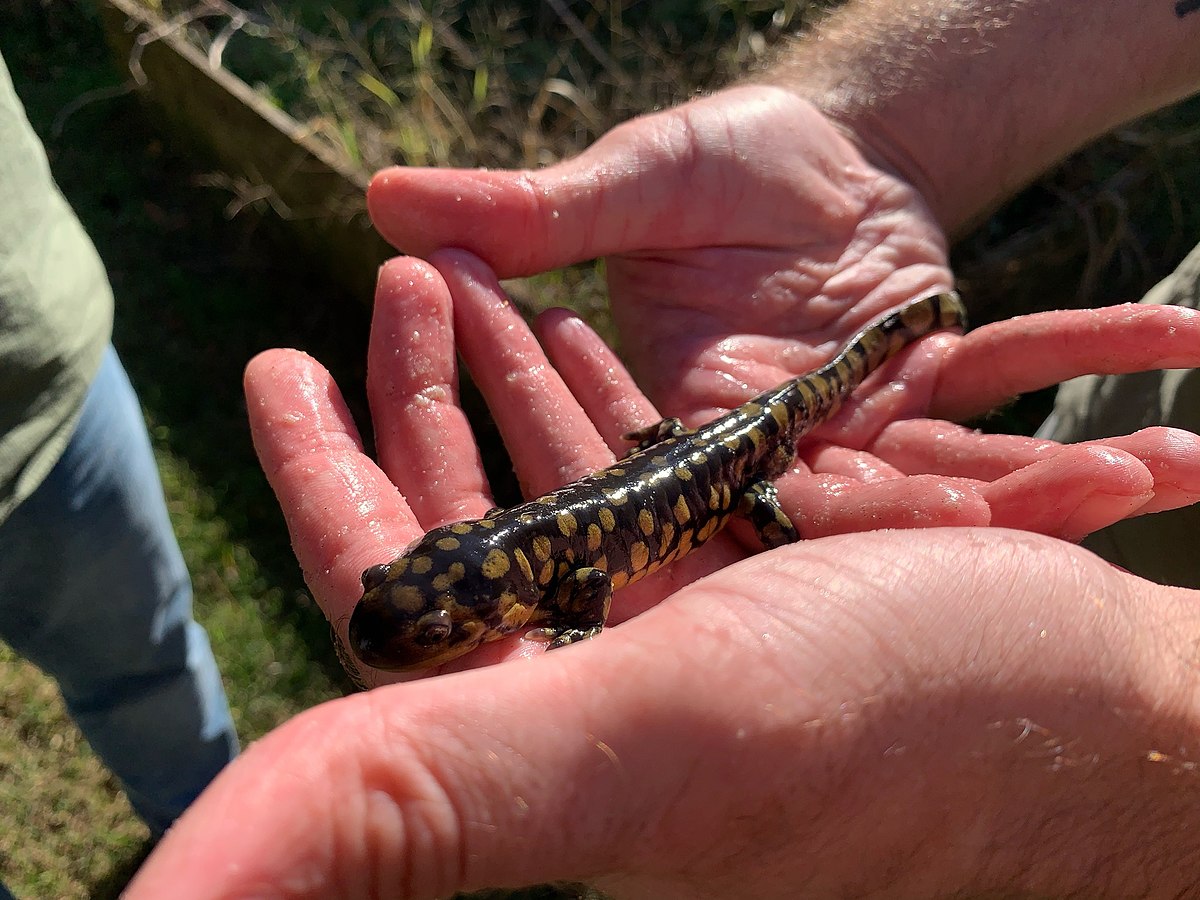 https://commons.wikimedia.org/wiki/File:Ambystoma_tigrinum_103483850.jpg
https://commons.wikimedia.org/wiki/File:Ambystoma_tigrinum_103483850.jpgTiger salamnders live in the wild on the east coast of the U.S.
They have greenish skin with black or brown stripes.
They will grow to up to 8 inches and can live for 14 years or more.
Their natural habitat is in forests and grasslands. They are born in the water but mostly live on land as adults where they burrow into the ground.
They can be tamed easily. You should wear gloves when handling them (unlike in the picture) because our salty skin could hurt them. They also may screte a substance from their skin that is irritating to us.
They like to eat worms, slugs, insects, and snails.
Tomato Frogs: Vibrant Red Amphibians from Madagascar with Toxin Defense and Long Lifespan in Captivity
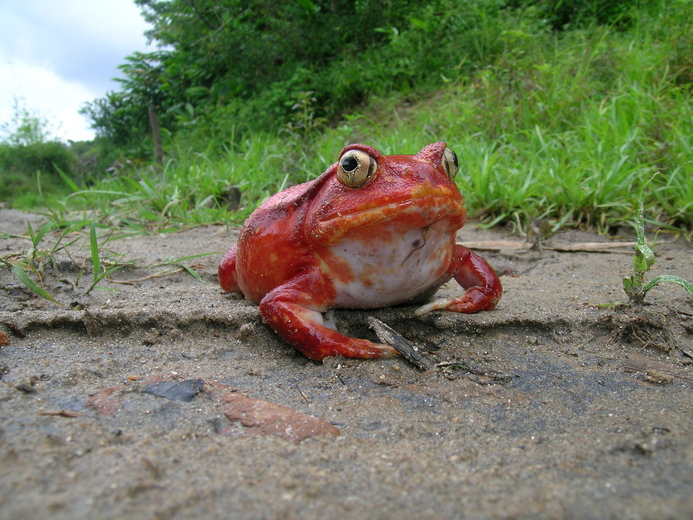 https://commons.wikimedia.org/wiki/File:Dyscophus_antongilii06.jpg
https://commons.wikimedia.org/wiki/File:Dyscophus_antongilii06.jpgThey are red frogs - thus the name tomato.
They are from Madagascar in the rainforest
They release toxins from their skin if they are threatened.
Males will grow to be about 2-3 inches, females can be as large as 4 inches.
They like a humid environment and they also like to burrow in the ground.
They eat small insects.
They live about 6-8 years, but with proper care the could live up to 20 years in captivity.
White's Tree Frogs: Waxy-Skinned, Nocturnal Climbers Perfect for Beginner Pet Owners
 https://commons.wikimedia.org/wiki/File:Litoria_caerulea2.JPG
https://commons.wikimedia.org/wiki/File:Litoria_caerulea2.JPGThese frogs grow to be 4-5 inches long.
Their native habitat is to live in trees in Australia.
They have a waxy coating on their skin so they can tolerate a drier climate than most other frogs. This makes them a good match for people new to having amphibians as pets.
They are nocturnal and are easily tamed. Wear gloves when you handle them because human skin oils can hurt these frogs.
They need a habitat with lots of climbing areas.
Their usual life span is 7-10 years and eat crickets, moths, beetles, roaches, and worms.
Xenopus Clawed Frogs: Unique, Water-Dwelling Amphibians with Clawed Feet and a Cautionary Tale of Invasive Impact
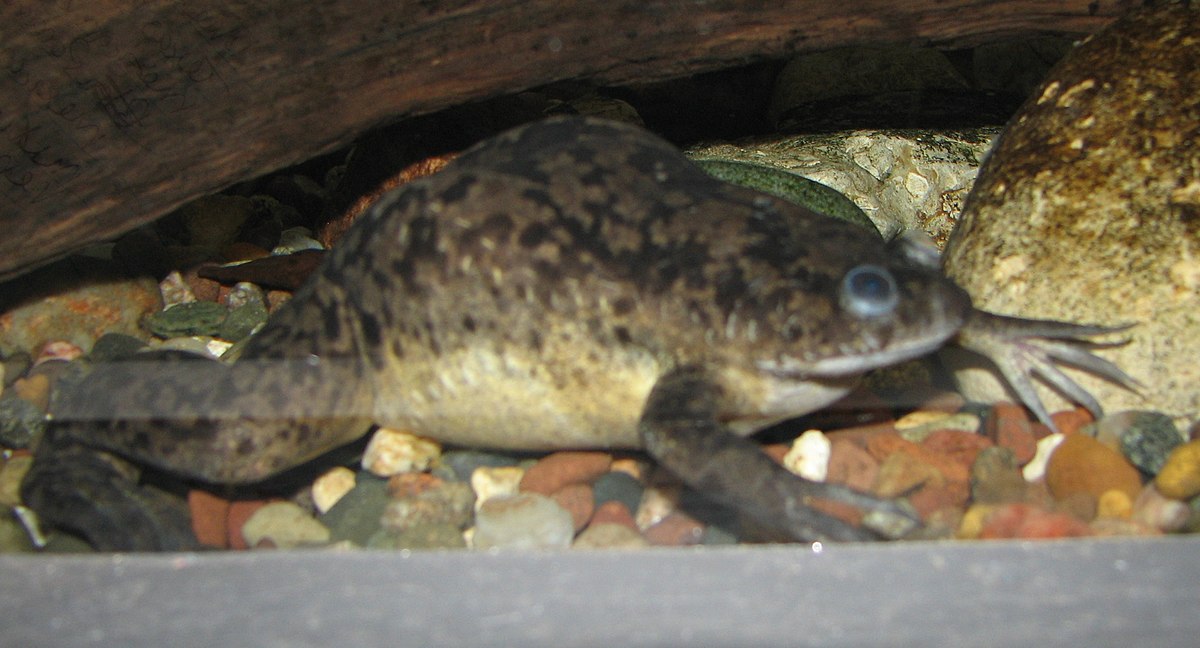 https://commons.wikimedia.org/wiki/File:African_Clawed_Frog.jpg
https://commons.wikimedia.org/wiki/File:African_Clawed_Frog.jpgThis is sometimes known as the African clawed frog, which is different from the African Dwarf Frog in that it’s front feet are clawed and it’s eyes are on the top of it’s head.
Like the African Dwarf Frog, they live entirely in water
They’ grow to be 5 inches longs and usually live 10-15 years.
They like to eat insect larvae, insects, crustaceans, small fish , and other life or organic waste found in water.
These amphibians as pets are illegal to own in many places in the U.S because people have released these invasive animals into the wild. They became invasive and ate all the food so there was none left for the native frogs. So if you have a chance to rescue one of these frogs that is going to be released into the wild - please do it!
Amphibians as Pets: Bring the Non Allergenic Fascinating Bit of Nature Into Your Home
Amphibians like frogs, salamanders, and other similar creatures can make fascinating pets, especially for those who live in the city but enjoy being surrounded by nature.
Setting up an aquarium or terrarium for an amphibian can be a rewarding experience, allowing you to observe their unique behaviors and natural beauty. Unlike fish, amphibians are often easier to care for and can be just as calming to watch.
Some amphibians can be handled, while others prefer to be admired from a distance to avoid stress. It's important to research each species' specific needs, such as water quality, temperature, and diet, to ensure they thrive in their new home.
One of the benefits of keeping amphibians as pets is that most people do not have allergies to them, which can make them an excellent option for individuals who are sensitive to other types of animals.







New! Comments
Have your say about what you just read! Leave me a comment in the box below.